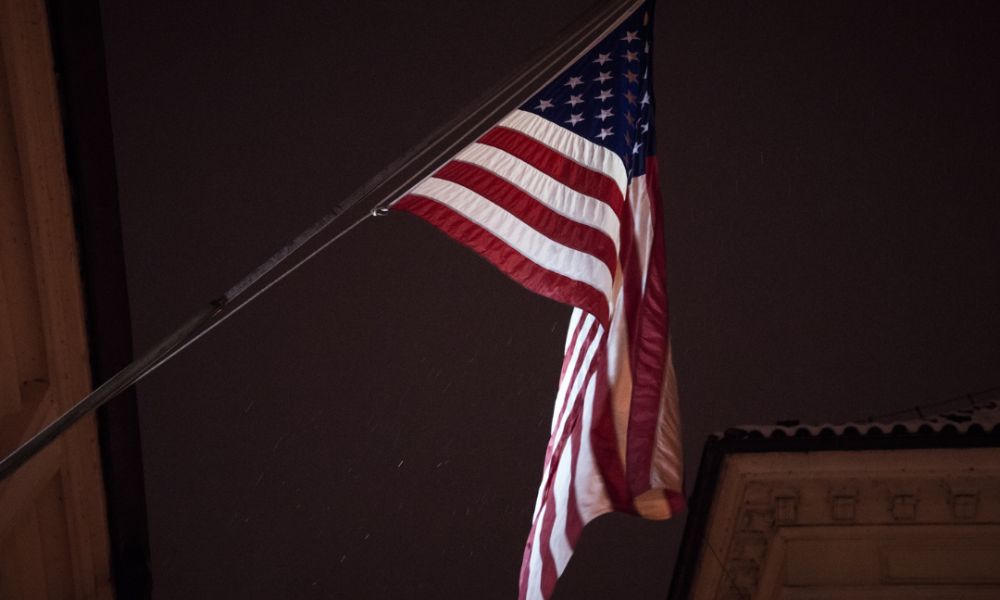Most people know there are specific rules regarding how to properly fly the American flag. These rules include how to raise and lower the flag, when to replace it, and how to illuminate the flag at night. However, these rules don’t really address how to display the American flag indoors. Continue reading to learn why you should have an indoor flag and how to display it.
Why You Should Display the Flag Indoors
There are many reasons why you might want to display the flag inside a building. Some of the most common reasons include showing your patriotism, honoring veterans in your family, protecting an heirloom flag, and celebrating civic buildings.
Show Off Your Patriotism
Many people like to hang up American flags to celebrate the country’s Independence Day. Other folks want to show off their patriotism year-round. Displaying a flag indoors is the perfect solution, especially if you don’t have a large outdoor space or the means to buy a flagpole.
Honor Veterans in the Family
Some veterans have American flags draped over their caskets at their funerals. For family of the deceased, displaying that flag can be a powerful sign of remembrance and veneration of their sacrifice. In case you’re wondering whether it’s disrespectful to display a flag that’s been used in a veteran’s funeral, the US Flag Code offers no reason not to display such a flag.
Protect Heirloom Flags
If you own a flag that’s been passed down through your family for generations, you might not be willing to expose it to harsh weather conditions and sunlight. This is especially true if you own a flag made from natural fibers like wool or cotton. A better way to preserve that flag for your descendants is to display it proudly indoors.
Celebrate Public Buildings
Many public buildings like city halls, banks, and academic institutions will display the American flag to honor the country whose citizens they serve. Displaying a flag inside the building can help remind everyone of the building’s purpose to serve the people.
Ways To Display the American Flag Indoors
You might think displaying a flag is fairly simple, but there are actually several options to choose from. In fact, you have more options when you display a flag indoors rather than outdoors.
Hanging on a Pole
Just because the flag is indoors doesn’t mean you can’t hang it on a flagpole—there are both standing flagpoles and wall-mounted ones. In either case, remember to place the flag so it doesn’t drape on anything since that’s considered disrespectful.
Hanging on the Wall
When you hang the American flag on a wall, you can choose to hang it either vertically or horizontally. The most important thing is that you keep the union—the blue square with the stars—on the flag’s own right. That means to the viewer, it will be on the left side.
Folded in a Case
The traditional shape for a folded US flag is a triangle. You can find special flag cases for displaying a flag on a shelf or table. If the flag belonged to a family member, such as a veteran, you can even find cases with memorial engravings.
Framing the Flag
One of the newest trends in displaying the American flag indoors is using a frame to hang or lean the flag against a wall. Even though it’s a fairly new trend, there’s nothing in the Flag Code that says this is disrespectful, so feel free to jump on board. Framed flags look great above the mantel or over the sofa. However, we don’t recommend using them in highly formal settings.
How To Correctly Display the American Flag Indoors
Just like with hanging the flag outdoors, there are special rules for indoor flags. Consider some of the most important regulations.
On a Flagpole
When you hang a flag on a pole, whether it’s standing or wall-mounted, the flag should hang vertically. It should be allowed to hang naturally, letting gravity do the draping. Remember that your flag should never touch the ground or drape on anything.
As Background for a Speaker
If you want to display the flag in the background of a speaker, there are a few rules to follow. The flag should be on the speaker’s right, which looks like the left from the audience’s perspective. The flag should also be in a prominent location; for example, the flag should not on the back wall of an auditorium.
Multiple Flags
You can display the US flag in groups with other US flags, or any other flag. Make sure to follow the flag order included in the Flag Code. The basic order, from left to right in the viewer’s perspective, is as follows:
- The US flag
- State flag
- City/county/locality/organizations
- POW/MIA flag
- Military organizational flags
If you display a foreign flag next to the US flag, it should go on the right. For multiple foreign flags, display them in alphabetical order to the right of the American flag. All of the flags should be the same size.
Crossed Flags
You can display the American flag on the wall so its staff is crossed with another flag, like a foreign or organizational flag. If you do so, the American flag’s staff should be over the other flag’s, and the US flag should be on the viewer’s left.
Flag Protection
If you want your flag to stay in excellent shape, it’s important to display it somewhere away from moisture, garbage, animals, and children. Moisture can cause mold to grow on your flag, while garbage smells can seep into the flag’s fibers. Children and pets don’t always know that a hanging flag isn’t a toy, so be careful where you choose to display yours.
What To Do With a Tattered Flag
The US Flag Code says that when a flag is ripped, stained, or otherwise tattered, it’s not fit for display anymore and should be destroyed in an appropriate manner. However, there are obvious exceptions to displaying flags of historical importance. If you own such an antique flag, you can display it framed like a painting in a museum, but not hanging on a pole.
The Perfect Way To Display Your US Flag
If you’re looking for a wall-mounted flagpole kit to hang your American flag indoors, check out our collection at Liberty Flagpoles. We carry multiple flagpole sizes that are easy to install in your home, workplace, or other building. We also offer outdoor home-mounted and telescoping poles. Contact us today for more information.








